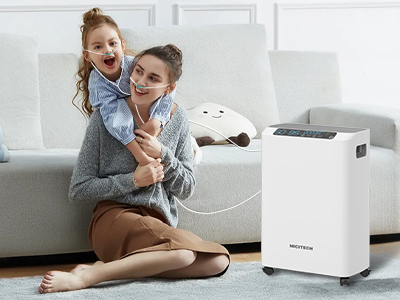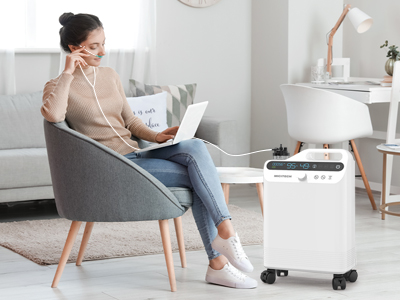01 Mar 2024
Oxygen concentrators are medical devices designed to provide supplemental oxygen by removing nitrogen from ambient air, resulting in higher oxygen concentrations suitable for therapeutic use.
Pediatric oxygen therapy involves the administration of oxygen to children with respiratory conditions or other medical needs to improve oxygen levels in their blood.

Medical Conditions Requiring Oxygen Therapy
A. Respiratory Illnesses
Children with respiratory illnesses such as asthma, pneumonia, bronchiolitis, or cystic fibrosis may require oxygen therapy to support their breathing and improve oxygen saturation levels.
B. Chronic Health Conditions
Certain chronic health conditions like congenital heart defects, neuromuscular disorders, or lung diseases may necessitate long-term oxygen therapy to enhance oxygen delivery to tissues and organs.
Special Needs and Developmental Delays
A. Impact on Oxygen Intake
Children with special needs or developmental delays may have compromised respiratory function, making them more susceptible to hypoxemia and necessitating oxygen therapy to maintain adequate oxygenation.
B. Oxygen Support During Activities
Oxygen concentrators enable children with special needs to engage in various activities while receiving continuous oxygen support, promoting their independence and quality of life.
Premature Birth and Neonatal Care
A. Oxygen Therapy for Premature Babies
Premature infants often require oxygen therapy to support their immature lungs and prevent complications associated with prematurity, such as respiratory distress syndrome.
B. Management of Respiratory Distress Syndrome
Oxygen concentrators play a crucial role in the management of respiratory distress syndrome in neonates, providing the necessary oxygen support until their lungs mature sufficiently.

Traveling with Oxygen-Dependent Children
A. Planning and Preparation
Families of oxygen-dependent children must plan and prepare adequately when traveling to ensure access to oxygen concentrators and other necessary medical equipment.
B. Ensuring Oxygen Accessibility
Portable oxygen concentrators allow families to travel with their oxygen-dependent children more conveniently, ensuring access to oxygen therapy during flights, road trips, or vacations.
School and Social Activities
A. Oxygen Needs in Educational Settings
Schools and educational institutions must accommodate the oxygen needs of students with respiratory conditions or other medical requirements, including providing access to oxygen concentrators during school hours.
B. Facilitating Participation in Extracurricular Activities
Oxygen concentrators enable oxygen-dependent children to participate in various extracurricular activities, sports, and social events, promoting their inclusion and overall well-being.
Home Care and Management
A. Safety Precautions
Parents and caregivers must follow safety precautions when using oxygen concentrators at home, including proper device setup, maintenance, and storage, to ensure the safety of oxygen-dependent children.
B. Monitoring Oxygen Levels
Regular monitoring of oxygen saturation levels and respiratory status is essential for optimizing oxygen therapy and ensuring the well-being of pediatric patients receiving oxygen concentrator therapy at home.
Conclusion
A. Importance of Oxygen Concentrators for Pediatric Patients
Oxygen concentrators play a vital role in the management of various medical conditions in children, providing essential oxygen support to improve respiratory function and enhance overall health outcomes.
B. Enhancing Quality of Life for Oxygen-Dependent Children
By addressing the diverse needs of pediatric patients, oxygen concentrators contribute to improving the quality of life and promoting the well-being of oxygen-dependent children, enabling them to thrive and participate fully in daily activities.
Keywords: oxygen concentrator
Originally published 01 Mar 2024, updated 01 Mar 2024.